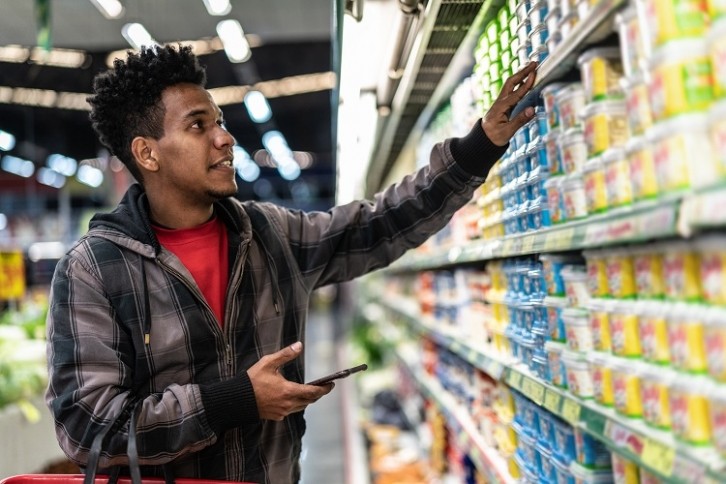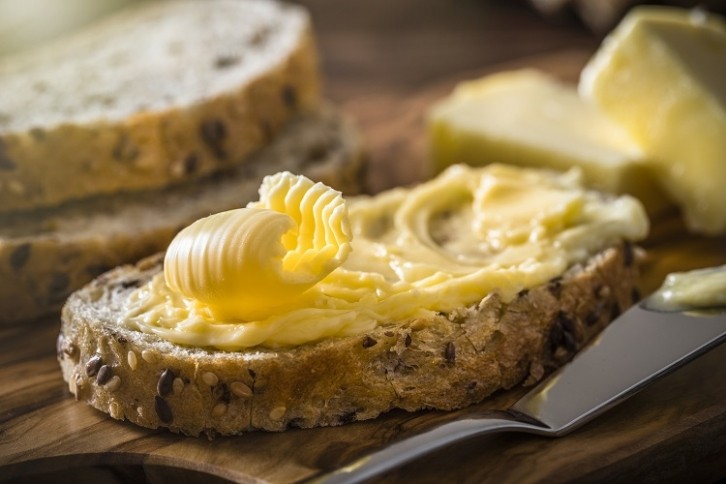After four years of R&D, including trials of more than 300 prototypes, spreads major Upfield – owner of Flora, Lätta, and I Can’t Believe It’s Not Butter – is celebrating the beginning of its transition to paper-based packaging across its portfolio.
The move aligns with the company’s sustainability ambition to cut plastic across its portfolio by 80% by 2030, but was no easy feat. Paper and oil-based products is a ‘particularly tricky combination’, Karina Cerdeira, head of packaging at Upfield, told FoodNavigator. “No comparable product uses paper tubs.”
Why was making a paper tub ‘extremely challenging’?
The new packaging, made from compressed wet paper fibres sourced from a PEFC-certified supplier, is the result of a collaboration between Upfield, materials sciences company Footprint, offset-printing business MCC Verstraete, and moulded fibre labelling innovator Pagès Group.
“We went through four years of trials, and we’ve finally arrived at a paper tub with no plastic lining, that is durable, leak-proof, food-safe and looks good,” recalled Cerdeira.
So what made developing the new paper-based packaging so demanding? Designing the ‘perfect’ solution took time and investment, we were told. “The spreads category is, by the very nature of the product, not normally compatible with paper. Developing a paper tub for oil-based products is extremely challenging.”
The biggest challenge faced by Upfield and the development team was creating a packaging formulation and detailed design able to hold an oil-based product and protect it against environmental conditions. Whereas plastic has the required barriers for both moisture and oxygen, traditional paper packaging does not.
“But over the past four years, we have tested multiple prototypes, in partnership with Footprint, to arrive at a solution that allows us to overcome the challenges and launch the paper tub we have today.”
How can paper be both ‘oil-proof’ and recyclable curbside?
According to Cerdeira, ‘many’ thought it would be impossible to put oil-based products in paper. But the new paper tub is considered ‘rigid packaging’. “We are working with a technology that allows us to coat each fibre individually, creating a strong bond between the fibres and ensuring there is no space between them – giving strength to the packaging.
“All combined with the details design, that takes into account the packaging forming technology limitations.”

The new packaging is recyclable in local paper waste streams and Upfield expects the packaging to achieve home composability certification by 2025.
“We are confident, given the tubs are over 95% paper, that they will compost, but will have the results from the compostability testing in 2025. A compostability test can take up to a year to complete,” explained Upfield’s packaging lead.
As to the product’s recyclability, the paper tub has received Class A certification, which means it is fully recyclable with recycling processes. The only requirement is that they are washed and rinsed first, which is clearly indicated on the labels.
Will consumers accept the new paper-based packaging?
In terms of consumer acceptance, the big question is does the packaging look any different? And in fact, might that be the aim?
Indeed, Upfield is hoping consumers will notice the difference. The texture and the look of the packaging is now paper instead of plastic, but the label design is the same for easy identification.
With regards to its shape, there is no major change and the packs have been designed in the same format so as to fit on shelf just as before – and to maintain the same quality, freshness and taste, explained Cardeira.
Upfield began rolling out the new packaging in Austria with its 215g Flora Plant product towards the end of 2023. And plans to bring more sizes and brands to market in the coming months once it has tested and understood consumer demand for the product.

As to whether the new packaging could spark innovation amongst other spread brands, the packaging lead told us she hopes so.
“As with most great innovations, the more of the industry that follows suit and challenges us to continue to be better, the more successful we will be. We must remove plastic from the environment, and we cannot do this alone.”
